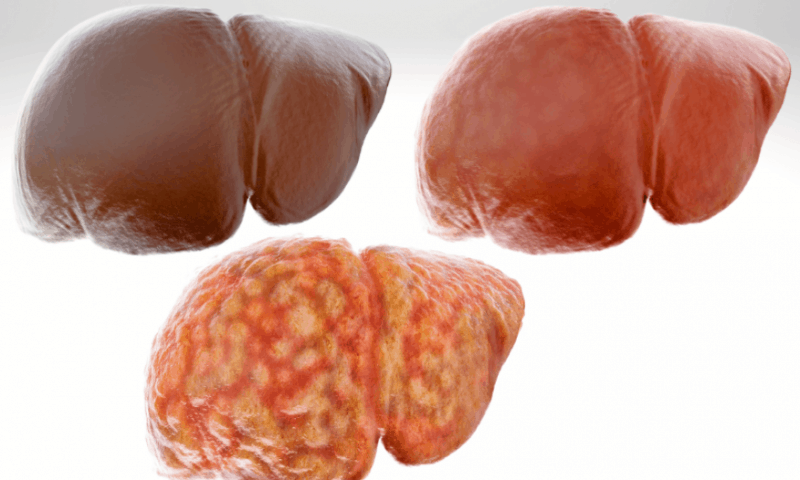NAFLD: Prevalence and Etiology
Non-alcoholic fatty liver disease (NAFLD) is a common liver pathology, characterized by hepatic steatosis. It can progress to non-alcoholic steatohepatitis (NASH) with the added presence of hepatocyte ballooning, lobular inflammation and fibrosis not brought on through excess alcohol consumption.[1] Although NAFLD and NASH are common, with an approximate worldwide prevalence of 25% and 1.5-6.5% respectively, there are very few specific diagnostic criteria and no specialized therapeutics for either condition.[2],[3] Currently, the therapeutic strategy for NAFLD and NASH relies on the off-label use of drugs that target some molecular outcomes of fatty liver disease, such as the use of select diabetes medications to treat underlying metabolic dysfunction, statins, antioxidants, anti-hypertensives (i.e. angiotensin receptor blockers) and anti-fibrotic agents.[3] Many pharmaceutical companies are working on new modalities to treat NAFLD, NASH and the underlying causation.
Excess fat accumulation in adipocytes induces inflammation, which in turn can lead to insulin resistance and the release of free fatty acids (FFA) from adipose tissue into the circulation.[1] FFA can be delivered to multiple organs, including the liver, where they pathologically accumulate in hepatocytes.[1],[4] Inflammation is a crucial factor influencing NASH development and progression.
Several immunologic pathways have been implicated in NASH pathology as a result of inflammatory signaling. For example, Kupffer cell (KC) activation has been demonstrated as critical in NASH development.[4] Activated KCs release inflammatory mediators including interleukin-6 (IL-6) and tumor necrosis factor-alpha (TNF-α), which serve to recruit additional immune cells to further perpetuate the inflammatory environment.4 Inflammation and reactive oxygen species (ROS) can also lead to fibrosis through activation of hepatic stellate cells (HSC), driving their conversion into myofibroblasts.[1]
Effect of NAFLD and NASH on Drug Metabolism
Co-morbid conditions are common in NAFLD and NASH. For instance, fatty liver is reported in 40–80% of patients with type 2 diabetes and 30–90% of obese patients.[1] Additionally, NASH can promote the development of hepatocellular cancer (HCC).[1] Given the high prevalence of co-morbid conditions with NASH, it is likely that patients with fatty liver disease are taking one or more pharmaceuticals to treat these ailments.
Clinical NAFLD and NASH conditions may alter drug metabolism, drug-drug interactions and drug safety efficacy. Fatty acids have been demonstrated to alter the KC phenotype toward an M1 (inflammatory) type.[5] In separate studies, inflammatory cytokines have been shown to down-regulate cytochrome P450 expression and activity.[6],[7]
Modeling NASH Conditions
In preclinical drug development, primary hepatocytes are used in in vitro models to predict drug metabolism and the risk of adverse drug reactions. In conventional models, hepatocytes from healthy donors are used; however, given the prevalence of NAFLD and NASH and the potential of these diseases to impact drug efficacy and safety, researchers may want to incorporate NAFLD- or NASH-like conditions in preclinical studies.
Recently, researchers at BioIVT investigated if NASH disease progression could be correlated with activity of hepatic drug metabolizing enzymes. A pathologist examined donor livers and assigned a NAFLD Activity Score (NAS), comprised of graded assessments of hepatic steatosis (0-3), lobular inflammation (0-3) and ballooning (0-2), with NAS ≥ 5 commonly used as a histologic diagnosis of NASH. Independently, and without pre-knowledge of the NAS score, BioIVT researchers assessed phase 1 and phase 2 enzymatic activity of hepatocytes from those livers. The study found that the activity of select drug metabolizing enzymes was, on average, decreased in more severe diseases (higher NAS score), making it a potentially important tool for interpreting results from in vitro models. Results of the study were published in a poster presented at the 12th International ISSX Meeting, 2019.
BioIVT’s HEPATOPAC® co-culture of micropatterned hepatocytes and stomal cells, and HEPATOMUNE® cultures, which include the addition of Kupffer cells, can also be used to model NAFLD and NASH-like conditions. HEPATOPAC incubation with FFA induces a NAFLD-like state that can be used to screen lipid-reducing drugs, or to assess drug toxicity in fatty liver disease. In the HEPATOMUNE system, Kupffer cells and hepatocytes are combined in a ratio seen during an inflammatory response, similar to that observed in livers advanced with NASH disease progression. In a poster presented at the 2021 SOT Annual Meeting and ToxExpo, BioIVT researchers demonstrated that HEPATOPAC and HEPATOMUNE cultures can allow researchers to examine the interplay between FFA, glucose and fructose and immune cell activation; factors that can contribute to hepatic steatosis and hepatotoxicity.
NASH remains a disease with significant unmet medical need. However, new in vitro models provide opportunities to better understand the mechanisms underlying the disease and its progression, as well as screening tools that will help advance drug discovery.

